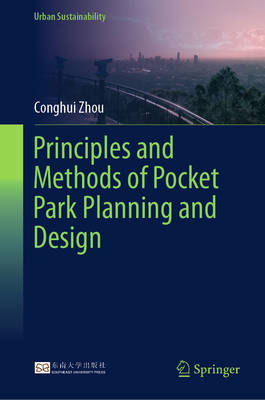
- Afhalen na 1 uur in een winkel met voorraad
- Gratis thuislevering in België vanaf € 30
- Ruim aanbod met 7 miljoen producten
- Afhalen na 1 uur in een winkel met voorraad
- Gratis thuislevering in België vanaf € 30
- Ruim aanbod met 7 miljoen producten
Zoeken
Omschrijving
This book focuses on the planning and design methods of pocket parks in the disciplines of urban planning and landscape architecture. It fills the gap in the current pocket park planning by innovatively exploring the service mechanism and planning methods of the pocket parks to alleviate the scarcity of outdoor recreational spaces in the high-density environments. This book integrates the results of previous research and our latest research results. Taking urban renewal as the planning scenario, the book systematically introduces the basic characteristics of mini-parks, planning principles and methods, and development promotion and assurance strategies. This book is used as a textbook for planning and design courses, as well as a professional reference book for urban planners and landscape architects. The authors have also made great efforts to use simple language and a large number of visual illustrations in the text. Through these approaches, the authors expected that the publication of this book would not only facilitate teaching and practical application, but also attract more interest and attention from ordinary people, and motivate them to actively participate in the planning, design, and management of mini-parks around them. Only when this goal is achieved, can the original value of mini-park development be finally realized.
Specificaties
Betrokkenen
- Auteur(s):
- Uitgeverij:
Inhoud
- Aantal bladzijden:
- 309
- Taal:
- Engels
- Reeks:
Eigenschappen
- Productcode (EAN):
- 9789819658008
- Verschijningsdatum:
- 1/08/2025
- Uitvoering:
- Hardcover
- Formaat:
- Genaaid
- Afmetingen:
- 156 mm x 234 mm
- Gewicht:
- 639 g

Alleen bij Standaard Boekhandel
+ 610 punten op je klantenkaart van Standaard Boekhandel
Beoordelingen
We publiceren alleen reviews die voldoen aan de voorwaarden voor reviews. Bekijk onze voorwaarden voor reviews.








